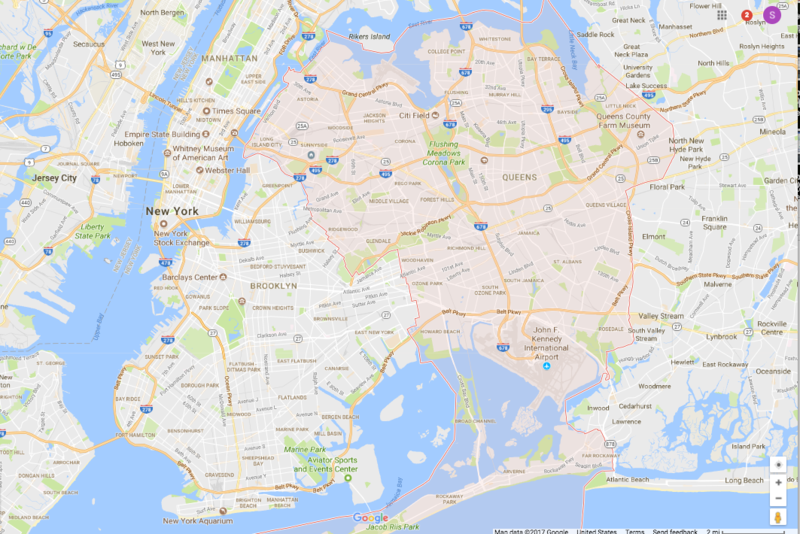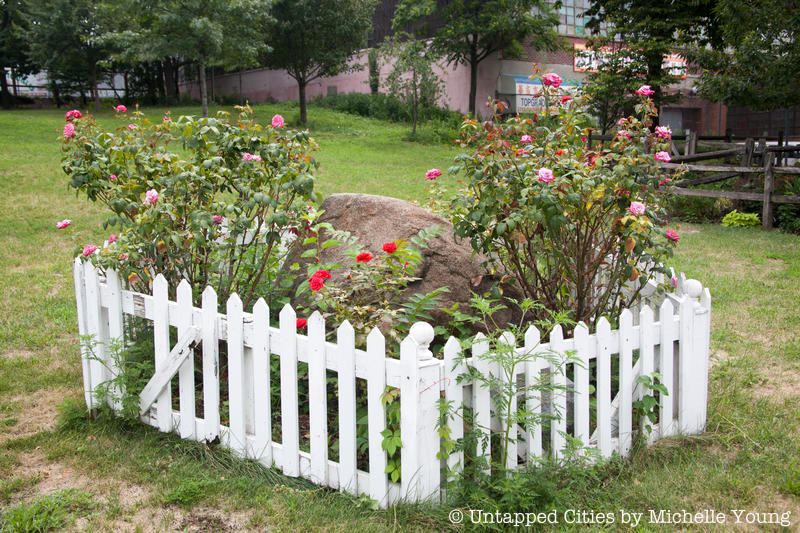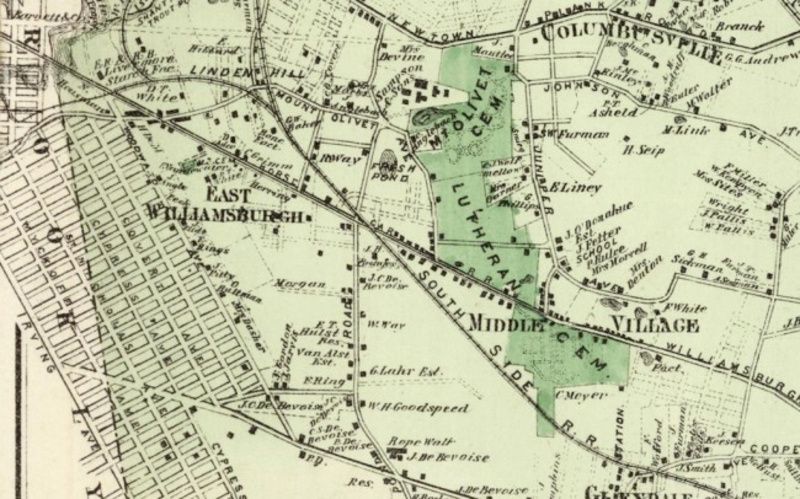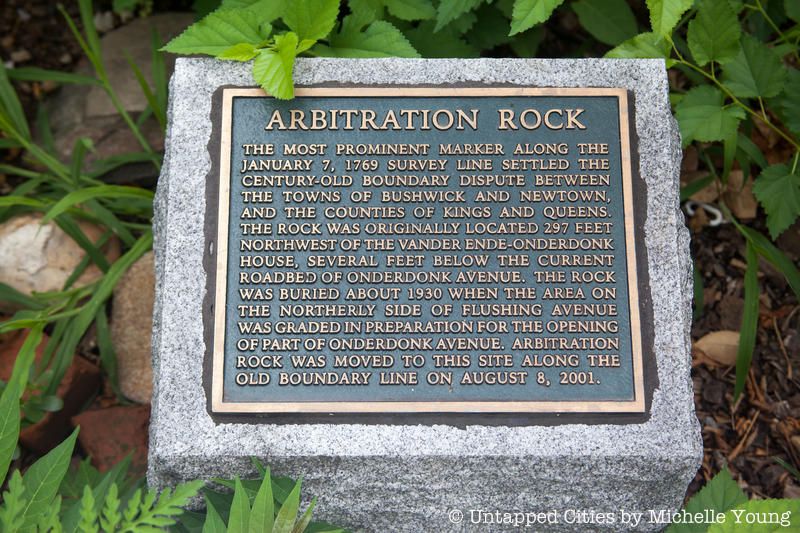Last Chance: The Annual Orchid Show Soars at the New York Botanical Garden
The vibrant colors of Mexico come to NYC for a unique Orchid Show at NYBG!


New York City has certainly had its share of border and territorial disputes, yet there’s a special one that’s been raging for centuries and still remains a problem today —just where exactly is the border between Brooklyn and Queens? The question is especially baffling for New Yorkers who live in Bushwick, Brooklyn and Ridgewood, Queens, since these neighborhoods are closest to either side of the border. While there is an established 21-mile border separating Queens to the east and Brooklyn to the west, since the colonial days, the boundary has always been mired with a lack of clarity.
Google Maps shows the border beginning at the East River, and winding along Newtown Creek, Cypress Avenue, Wyckoff Avenue, and into Jamaica Bay. It passes through peaceful waterways, the low-lying lands of Spring Creek and Lindenwood, and many factories and supply shops, with the occasional glimpse of the Queensboro Bridge and Long Island City buildings reminding you that you’re still in a modern city and not a forgotten wasteland. The border further passes through some mixed residential-commercial areas in Queens along Cypress Avenue, passing parks, cemeteries, and the Ridgewood Reservoir. Finally, the border comes back to familiar neighborhoods once it reaches Jamaica.

Image via Google Maps
Disputes over the Brooklyn-Queens boundary have been raging since as early as 1661, more so reflecting the deeper conflicts between Bushwick‘s original Dutch settlers and Newtown’s English inhabitants. In fact, according to the Greater Astoria Historical Society, tensions over the boundary line were so great that “men of one community would stone those of another.”
Finally, in 1768 a bill was passed for a commission to draw an official line between the two townships, and the next year, the borderline was measured from a huge rock called “Arbitration Rock” (remember, these were the days of natural boundaries). It wasn’t until 1880 that New York State sent surveyors to confirm the point on the rock it was measured from. Because Newtown was in Queens County and Bushwick was in Kings County, Arbitration Rock also became the boundary between these colonial counties in addition to the towns themselves.

Throughout the 1800s, Arbitration Rock was the formal marker for any property disputes between Brooklyn and Queens, with all property boundaries measured from the rock’s center. But things changed in 1898, when Newtown and Bushwick were folded into a consolidated City of New York. Arbitration Rock started losing its significance, so that by 1917, it was reduced to a decrepit, forgotten site.

A map from an 1873 atlas showing the theoretical Brooklyn grid meeting the border of Newtown. Image via New York Public Library
Eight years later, the city redrew the Brooklyn-Queens border to alleviate disputes caused by the impeccable straightness of the former boundary, which was going right through people’s homes. In other words, someone could technically have a bathroom in Brooklyn, but a kitchen or living room in Queens. This alone was problematic enough, but imagine the larger tax and voting-related issues that arose from having a boundary run through your house!
In its 1931 Administrative Code, the City moved away from using natural markers as boundaries and instead precisely fixed a boundary to a grid plan using coordinates suggested by multiple federal agencies, rendering Arbitration Rock repetitive and unnecessary. However, even this didn’t solve the issue, as it ignored the constant, rapid development occurring in New York City, with the border running through buildings and monuments that no longer existed. In addition, the city experienced drastic demographic shifts post-World War II, and continues to evolve today. In the face of an ever-changing city, the boundary set by the 1931 code persists, resulting in continuing, tangible confusion between Brooklyn-Queens residents (although at least no one’s stoning each other).
Delivery workers and other city service providers still often debate where the boundary is. But lack of clarity surrounding the border not only affects city employees, but private citizens as well. In 2012, artists in Ridgewood weren’t allowed to go into the Brooklyn Museum’s studio project because they had Queens zip codes. However, the artists considered themselves to be from Bushwick.

However, the Brooklyn-Queens dispute appears to just be one of multiple instances of border confusion. From 1964-1990, the City used color-coded street signs for each borough. If you glanced up and saw a blue sign with white letters, you were in Queens, while a black sign in white lettering implied Brooklyn. However, this system ended in the 1980s, when the city decided that all signs should be written in white letters on green backgrounds, which is what we see today.
Urban Omnibus also describes the problems associated with house addresses near the border during this time, saying that some streets followed the Brooklyn pattern, with others adopting the hyphenated system of Queens. Still others used “unique addresses keyed to their immediate grids,” while some even “display two addresses to ensure accurate mail delivery.”
Oh, and what happened to Arbitration Rock? The new boundaries placed the obsolete Arbitration Rock in Queens, and it became buried underground due to street upgrades made to Onderdonk Avenue in 1930. Though some believe it was dynamited long ago and lost to time, a rock thought to be Arbitration Rock was excavated in 2001 through a seven year quest by William Asadorian, a librarian with the New York Public Library. Researching archival maps and documents, Asadorian was confident he knew where the rock lay. The City of New York agreed to do the dig, as utility work was already in the pipeline, and brought up the rock. and then moved right next to Onderdonk House.
However, the rock continues to generate controversy. Some believe it’s the wrong rock entirely. Others are upset that it was moved to this location at the Onderdonk House, which effectively means it belongs to Queens. The Director of the Greater Astoria Historical Society believes Arbitration Rock may be an entirely different boulder all together, located in front of a fence on Varick Avenue, about five blocks away. Regardless, today Arbitration Rock seems comfortable in its new home, surrounded by a white picket fence and celebrated with a new plaque. In response to these disputes, a Queens historian jokingly said it should be cut in half for both boroughs to share.
Despite the confusion even furor incited over the Brooklyn-Queens boundary throughout history, the border itself remains barren and serene, seemingly the last place to be the subject of centuries of dispute.
Next, check out 7 Territorial Disputes Between NYC and Other Countries, States, Cities and More and the time we went on a bike tour of Brooklyn’s abandoned water infrastructure.
Subscribe to our newsletter